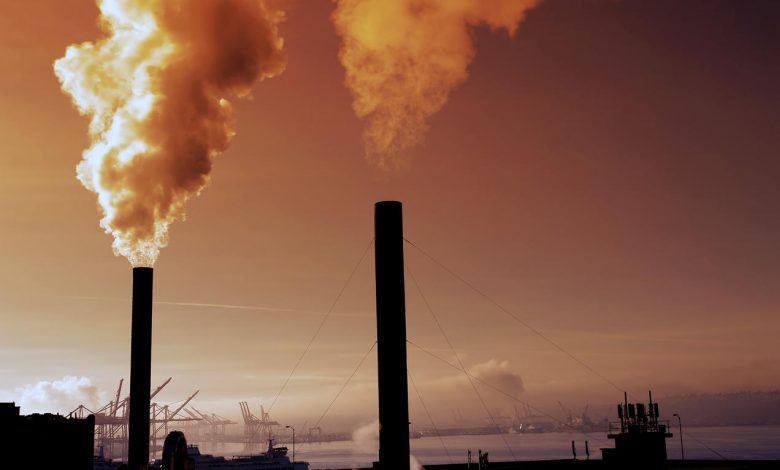After Delhi, Weather Conditions To Intensify Winter Air Pollution In West Bengal
According to meteorologists, an anticyclone is likely to develop over West Bengal region in the coming days

After Delhi, air pollution menace is now slowly engulfing West Bengal too. According to a recent report by IQAir, a Switzerland-based climate group, Delhi, Kolkata and Mumbai are among the top ten most polluted cities of the world. Delhi topped the list with AQI at 556, Kolkata and Mumbai recorded an AQI of 177 and 169, respectively, at 4th and 6th position. A mix of several factors like vehicular and industrial emissions, dust and weather patterns make it worse for these cities.
Anthropogenic (human-led) activities have already pushed pollution levels way beyond safe limits but unfavourable weather patterns and meteorological factors are leading to a further rise. Unless pollution levels are cut from the source, the combination of anthropogenic activities and changing meteorology could lead India towards a public health disaster.
According to meteorologists, an anticyclone is likely to develop over West Bengal region in the coming days, which would be responsible for intensifying the pollution levels in the coming days.
In meteorological terms, anticyclonic circulation is an atmospheric wind flow in upper levels associated with any high pressure system. In simple words, whenever such a system forms, the wind starts flowing clockwise in the Northern Hemisphere and counter-clockwise in the Southern Hemisphere. This circulation of winds does not allow pollutants to rise and dissipate.
“An anticyclone is currently marked over East Madhya Pradesh and adjoining Chhattisgarh, which is likely to shift eastwards. By November 20, we can expect this anticyclone to move over Odisha, Gangetic West Bengal and adjoining Jharkhand. Wherever, there is an anticyclone, winds do not tend to subside and do not let the pollutants lift up in the atmosphere. As a result, pollutants transported from north-westerly winds from the northwestern plains along with the local pollutants, would get trapped over the earth surface. Hence, we can expect a sharp spike in the pollution levels. The weather system is expected to stay over West Bengal for the next 3-4 days and so will the pollution levels,” said Mahesh Palawat, VP- Meteorology and Climate Change, Skymet Weather.
Similar weather conditions had developed over Kolkata and adjoining areas of West Bengal back in 2018. As per various news reports, Kolkata’s air quality was worse than Delhi for over a fortnight in November and December 2018.
According to a research paper ‘Wintertime pollution over the Eastern Indo-Gangetic Plains’, in the winter months the IGP is often enveloped by thick fog and haze. The prevailing winds at low altitudes (surface to ∼850 hPa) are northerly to northwesterly with low wind speeds (<5 ms−1 ) and the eastern parts of the IGP are impacted by a localized area of strong subsidence in winter. These conditions tend to trap the pollution at low altitudes.
The reason behind the high concentration of pollution during these months may be due to seasonal effects. The months from November to February are the winter season in Northern India. During winter the vertical movement of winds gets stopped due to the pressure variations (most probably high pressure on the ground) and the pollutants remain concentrated at ground level for a longer period, thus recording the high concentration.
Topography of West Bengal
According to scientists, West Bengal bears the brunt of being situated on the eastern side of the northwestern plains of Delhi, Uttar Pradesh, Punjab and Haryana. The deteriorating air quality over this region, particularly during winters, is a cause of major concern, since the pollutants undergo long range transport from their source regions to the Indo-Himalayan Range (IHR), Bay of Bengal (BoB) and other remote areas, polluting their pristine atmospheric conditions.
“The very nature of topography over Indo Gangetic Plains covering the region from Northwest of Indian subcontinent all the way up to West Bengal is bounded by mountain ranges both to its north and south. This feature directs most emissions in North India towards east towards West Bengal draining eventually into the Bay of Bengal. Therefore, during winters, Eastern Indian regions including West Bengal have higher levels of transported air pollution, further enhanced by high levels of local anthropogenic emissions,” said Dr V Vinoj, Assistant Professor, School of Earth Ocean and Climate Sciences, Indian Institute of Technology Bhubaneswar.
“In addition to local emissions, Kolkata and other eastern parts of the country are expected to see polluted air as winter sets in due to its geography. The winds from the North East will push the pollution towards the states of Bihar, West Bengal etc. We will see the impact of what happens in northern India (stubble burning) in these states as the particulate matter is transported to these states. Normally, the north westerly winds would carry all the pollution into the Bay of Bengal and bad air quality over the region might only be temporary. However, any meteorological factors like a pressure belt or calm winds, could result in the pollution staying on like it did in 2018,” said Prof S N Tripathi, Civil Engineering department, IIT Kanpur and Steering Committee Member, National Clean Air Programme, MoEFCC.
Further, North India is expected to witness intense winter this season on account of La Nina conditions brewing in the Pacific Ocean. With this, both meteorologists and scientists are afraid that such unfavourable conditions would aggravate the air pollution levels across Indo-Gangetic plains. Winters have already made an early start across North India and so has the air pollution in Delhi and adjoining states of Punjab, Haryana and Uttar Pradesh. This situation could have an adverse impact on the pollution levels in West Bengal as well.
West Bengal Air Pollution in numbers
Based on PM 2.5 concentration for the past couple of years, the state can expect high levels of pollution in the coming months.

The figure above shows that the PM 2.5 concentration in Asansol, Howrah, Kolkata and Siliguri has been above the CPCB safe limits of 40 ug/m3 throughout the winter months since 2019. Kolkata saw the highest monthly average PM 2.5 concentration of 201 ug/m3 in January 2019. Monthly average data for the cities over the years can be found here.
What’s the mix of pollutants in the winter air?
As against the rest of the year, the concentration of PM 2.5, PM 10 and NO2 is almost one and a half times higher in winters.


The PM 2.5 is monitored at 14 monitors in six cities. Of these, Asansol, Siliguri, Durgapur and Haldia have one continuous ambient air quality monitoring station (CAAQMS) each, while there are three monitors in Howrah and seven in Kolkata. The monitors recorded an uptime (the machine and data recorded availability) of 90% as against the requirement of 70%. However, the monitoring continues to happen in urban centres only.
The writer of this article is Dr. Seema Javed, a known Environmentalist, Journalist and Communications Expert




